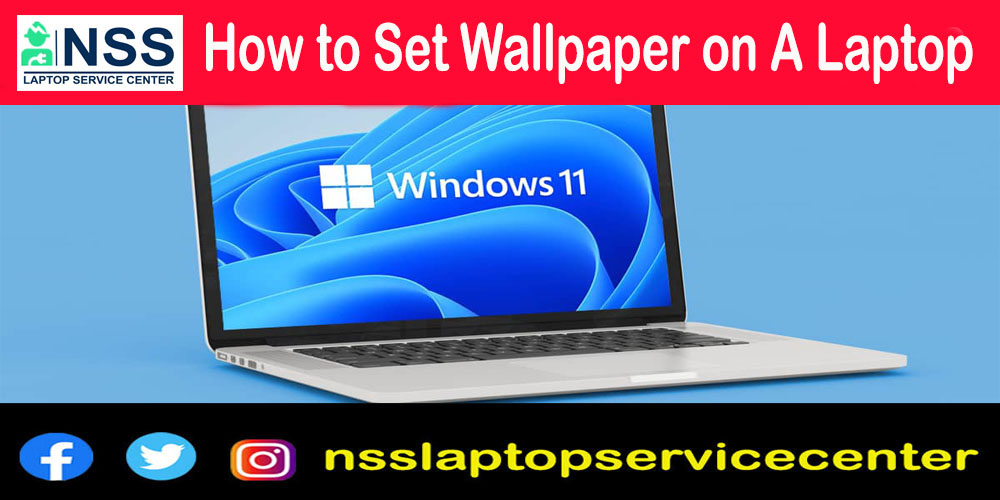
What is Laptop Background Wallpaper?
Wallpaper is a background image of your desktop. You can change your wallpaper anytime to make your screen more attractive and representable. Wallpaper has an inserted slideshow option that frequently changes your laptop wallpaper after a set interval.
Some methods mentioned below explain how to set laptop wallpaper on Windows 10.
Live wallpapers on my laptop take me to my happy place. Viewing a cool wallpaper or an inspiring quote from Google on my desktop motivates me to work.
If you do YouTube videos and use an environmental/lifestyle background, a changing laptop wallpaper image on your laptop makes a lovely backdrop.
How to set wallpaper on a laptop?
Here are some instructions for setting live wallpaper from Google;
Download Your Desktop Wallpapers from Google on A MAC/window 10
-
Download and save The Desktop/lock screen Wallpaper from Google of your choice to your laptop (of course, you can save more than one if you want)
-
Right-click on your laptop screen > select "Change the desktop background."
-
Select "Folders" on the left and locate and select your downloaded changing wallpaper.
-
Click Desktop/lock screen & Screen Saver.
Select a folder of downloaded images from the Desktop pane on the left, then click an appearance on the right to change your laptop wallpaper.
Also Read: How to Reboot a Dell Laptop or Desktop Windows 11 | 10 | 7
Also Read: How to install Microsoft big new Windows 11 update is out now
Doesn't changing wallpaper look fabulous on a laptop?
Live wallpapers are probably the best way to keep your desktop attractive and full of surprises. I have a great collection of live wallpapers from Google, and I like them to keep changing on my screen.
So, whether you are a desktop wallpaper fanatic or want to charm your laptop screen, like me, I can show you how to set live wallpapers on a laptop Windows 10. Let's have a look.
Method #1 – Windows 10 Native
Windows has an inserted slideshow feature that automatically switches your laptop wallpaper after a set interval. This feature only works with your collection of wallpapers, so the used wallpapers must be downloaded first.
Here is a step-by-step explanation of using this feature for a live slideshow of wallpapers :
-
Windows 10 only allows a single folder containing a wallpaper collection. So first, put all your wallpaper choices in a single folder.
-
Now move to Windows Settings > Personalize > Background. Here, click on the drop-down menu below Background and select Slideshow.
-
Press the Browse button below and click the wallpaper collection folder you created.
-
To set the interval, click on the drop-down menu below the Change Picture every heading and select the required interval (1 minute to 1 day).
That's all. Your laptop screen will automatically change to a new wallpaper after the set interval.
Method #2 – Using third-party apps
You can also use a third-party app to download wallpapers and switch your wallpaper automatically. This application lets you easily set live wallpaper on your laptop. Below, I have mentioned two of the best applications for this purpose that are also free:
1. John's Background Switcher (JBS)
JBS is the best choice for its no-nonsense interface and working. To get you started, it has some default collections that don't require any setup. You pick the group, and mesmerizing wallpapers start appearing.
If you want to create your collection of live wallpapers for PC, you can get wallpapers from Google and any other social platform. You can also indulge in your group of live wallpapers for the lock screen and these resources.
There is also an option to add any media RSS, which allows you to get wallpapers from any image website, such as DeviantArt or Behance. Oddly, each resource has further options to get the required wallpapers, which are very customizable.
I like its picture mode feature that gives you complete control over how you want the wallpaper to be applied. Using multiple images, you can crop, fit, stretch, scale, and even get collages and montages. You can select the interval from 10 seconds to 7 days for switching wallpapers.
Best of all, it supports dual monitors with devoted features to charm your dual monitor setup.
Pros
-
Easy to use.
-
Supports reliable sources along with RSS support.
-
Dual monitor support.
-
Default preset to get you started.
Cons
-
Simple but limited in features.
2. BioniX
Regarding features and customizability, BioniX is decades ahead of JBS. Nevertheless, in my experience, it isn't easy to use and will probably work best for an advanced user. The interface is awkward and overwhelming, so I might say, "It's not user-friendly."
I spent a few hours getting the tools and adding wallpaper sources.
If you can deal with the interface, then BioniX is the most robust application for setting up live wallpapers for Windows 10. For downloading wallpaper sources, you can either use Flickr Mass Downloader to download live wallpapers from Flickr or manually enter URLs of web pages on Google or from where you want to download images.
This approach offers more control over what you want, but it's also an inconvenient task.
To list a few of its unique features, you can add effects to all wallpapers, get day/night wallpapers based on time, get dynamic webcam wallpapers, devoted shortcuts, automatic categorization, and filter to reject bad wallpapers (low resolution), and much more.
Pros
-
Extraordinary customizable.
-
You can add images from any website on the web.
-
Day/night to show light or dark wallpapers at the respective time.
-
Automatically rejects terrible wallpapers.
-
Get images from public webcams.
Cons
-
The interface is a bit difficult to use.
-
Adding wallpaper sources requires more manual intervention.
Devoted pause and play buttons are available for both tools to start and pause wallpaper changing. Once you add the required resources, use these buttons to control the wallpapers.
Also Read: How to Download and Update Dell Drivers in Windows 10 / 11 PC or Laptop
Also Read: How to Create a Password in Windows | Laptop | Computer | Apple MacBook
Method #3 – Using Bing
Bing is known for its Daily Background wallpaper that replaces its homepage with a new daily image. Many people only visit Bing to see its daily wallpaper, and I am sure you'll agree that they are amazing.
If you find Bing background images attractive, you can also get them on your PC. Using the Bing Wallpaper, you can switch your wallpaper with the latest Bing Daily Background wallpaper as soon as it is updated.
Download the Bing desktop app and install it. At the end of the installation, check the check box next to Make the Bing homepage image your desktop background. You may review or uncheck other provided options as you please. That's it; after a few seconds, your desktop wallpaper will be switched automatically with Bing's Daily Background Image.
However, many people desire this because it lets you make better use of external screens to which you may have your PC/laptop connected. Imagine displaying a live fireplace or a virtual fishbowl on those screens when you're not using them!
Also Read: How to Clear Cache in Windows 10 Using Run
Also Read: How to Enable Secure Boot on Windows 11 PC or Laptop
Drawbacks to Live Wallpapers & Animated Desktops in Windows 10
There are certain benefits to having a live wallpaper on a laptop, but it can also adversely affect your system in the following ways:
-
It will drain your battery if you're using it on a computer without the power plugged in
-
It might put additional demand on your CPU
-
It could end up being more of a distraction than a help when it comes to productivity
To sum it up
These three methods should be enough to keep your laptop screen fresh. I should mention that automatically switching wallpapers might affect the battery timing of your laptop. It's better to turn off live wallpaper or slow it if you have a low battery.
Additionally, if you use a 'download and apply' wallpaper feature, your network data will be used and may even slow down other network activities while downloading images.
Don't forget to let me know which method you find the best.
Popular Services
- MacBook Battery Replacement Cost
- HP Printer Repair in Delhi NCR
- Dell Laptop Repair
- HP Laptop Repair
- Samsung Laptop Repair
- Lenovo Laptop Repair
- MacBook Repair
- Acer Laptop Repair
- Sony Vaio Laptop Repair
- Microsoft Surface Repair
- Asus Laptop Repair
- MSI Laptop Repair
- Fujitsu Laptop Repair
- Toshiba Laptop Repair
- HP Printer Repair Pune
- Microsoft Surface Battery Replacement
- Microsoft Surface Screen Replacement




